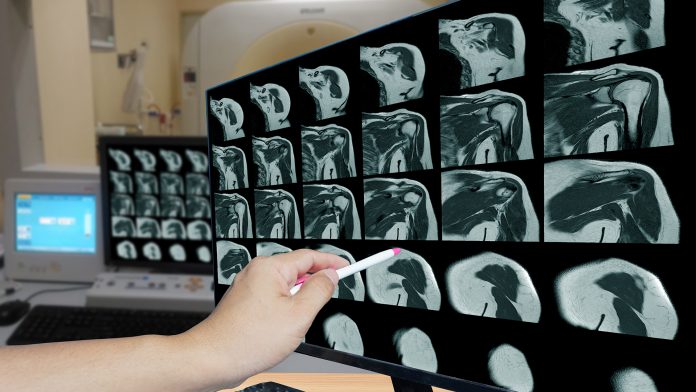Boston University researchers have argued that AI can help with image interpretation and decrease reporting time in musculoskeletal radiology.
In a new study, Boston University researchers have outlined the role that AI applications can have within musculoskeletal radiology. This includes helping with image acquisition and interpretation and prediction of future outcomes.
However, AI implementation in the industry also comes with certain challenges that must be addressed. For example, the availability of large and good-quality datasets.
The study, ‘How AI May Transform Musculoskeletal Imaging,’ was published in the journal Radiology.
Benefits of implementing AI in musculoskeletal radiology
As musculoskeletal imaging volumes continue to rise, there is a lack of sub-specialised musculoskeletal radiologists to interpret results. AI tools have the potential to help musculoskeletal radiologists with their workload, which is ever-increasing.
“With the ongoing trend of increased imaging rates and decreased acquisition times, a variety of AI tools can support musculoskeletal radiologists by providing more optimised and efficient workflows,” said corresponding author Ali Guermazi, MD, PhD, chief of radiology at VA Boston Healthcare System and professor of radiology and medicine at Boston University Chobanian & Avedisian School of Medicine.
AI shows great potential for more complex tasks such as disease prognostication and prediction of clinical outcomes over time. This could increase the value of imaging and allow the field to move towards precision medicine.
Challenges that must be overcome for implementation
Despite the benefits that AI may bring to musculoskeletal radiology, there are challenges that must be overcome for its implementation into clinical practice. This includes the requirement for large, good-quality data sets. This is problematic for uncommon conditions, for example, musculoskeletal tumours.
To create these data sets, multi-institutional collaboration is essential. However, this introduces its own set of issues, like differences in imaging protocols.
“For AI to be the solution, the wide implementation of AI-supported data acquisition methods in clinical practice requires establishing trusted and reliable results. This implementation will require close collaboration between core AI researchers and clinical radiologists,” said Guermazi.
What will successful implementation look like?
Once implemented on a clinical scale, AI-based tools will help to ease the workflow of a musculoskeletal radiologist.
Other AI applications may be helpful for business, education, and research if integration into the field of musculoskeletal radiology is successful.
AI will not replace radiologists – workers will simply use the technology in the future.









